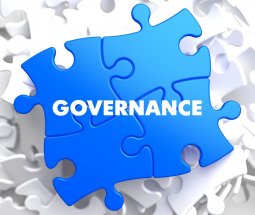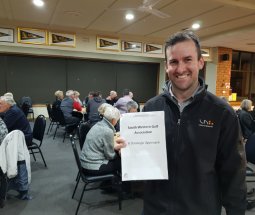Meeting Documentation
Preparing an Agenda
Good preparation and use of Meeting Agendas assist meetings to run efficiently, to time, provides the Committee with a meeting focus, and can assist in keeping members informed and engaged.
Meeting Agendas
To make the best use of Committee meeting time an Agenda is developed collaboratively and distributed to Committee Members before the meeting to ensure the following:
- Committee members have time to think about the issues prior to the meeting
- Committee questions can be answered before the meeting if clarification is needed
- Committee leaders can prioritise and allocate time to each item
The process for the meeting begins with the prapration of the agenda.
A suggested guide for the development and distribution of the Agenda is for the Secretary to put out a call for Agenda items and for reports requiring distribution.
About 9 days prior to the meeting:
- Previous minutes
- Emailed information from Committee members
- Committee Calendar
No later than 7 Days prior to meeting the Secretary distributes the Agenda including supporting papers and reports. Committee Members should read reports prior to the meeting.
No later than 2 days prior to meeting Committee members advise the Chair of any extraordinary issues arising out of reports that will require significant discussion ( timings may need to be adjusted prior to the meeting)
Actual Agenda Headings:
Note that the order of the items are important to make sure that the most pressing items are given sufficient time. For decision items usually come before items for noting.
Practicalities
This process works best when:
If we need to exceed this time to ensure adequate and appropriate discussion, the Chair takes advice from the Committee and then either:
Helpful Resources:
Minutes
Best practice for Minute taking is either by a Minutes Secretary or a technological solution (digital recorder which then converts to a Word document). It is most efficient to have a Minutes Template prepared and to take your laptop. A Minutes Secretary does not replace the Committee Secretary. The Minutes Secretary is anyone who can accurately take minutes and provide a first draft quickly and efficiently to the Secretary.
The Secretary then checks the Minutes for accuracy and releases them to other Committee members. The Minutes Secretary is often a person with good shorthand or technology skills. Using a Minutes Secretary frees the Secretary to actively participate in the Committee meeting.
Minutes should NOT record who said what unless someone distinctly request to go on the record. The Minutes should provide a record of the proceedings of the meeting just sufficiently to be useful and transparent. E.g. the Minutes do not need to detail all the points of discussion, rather summarise and provide the resultant decision.
Motions, decisions and other formal aspects are recorded. It is very important that:
Committee Action Tracking List
All actions assigned internally and to ‘Committee Help’ should be recorded on a tracking list (sample below), which is reviewed each meeting.
Let the person undertaking the action advise of the completion date. If unhappy with this, then simply ask “What would it take to get it done by…?”
Helpful Resources:
Reporting to the Committee
Reports to the Committee should be simple and brief. Reports should be in writing, e.g. a simple bullet point report, or an email. These should be distributed and READ prior to the meeting so that time in the meeting can be used effectively.
Standard reporting helps keep things simple - use of the questions below could help to keep reporting focused:
Verbal reporting is inefficient and should be discouraged. Discussion should be action focused: what do we need to do or decide?
Committee Records
In order for a club to run efficiently, it must keep records. Most records will be generated through the activities and decisions of the Committee, or member data. All records should be accurate, current and readily accessible. The person with the task of maintaining records is the generally the Secretary.
Some legislation requires records be kept for a minimum period, it is recommended that clubs retain records for 10 years. Some records, such as rules and certificate of incorporation (if relevant), should be permanently filed.
The following present some of the records and record keeping methods adopted by clubs. Note that electronic records, data bases are optimal but should be backed up adequately to avoid loss.
- Preparing an Agenda
- Minutes
- Committee Reports
- Agenda closes for next Committee meeting
- Reports due for next Committee meeting
- Draft Agenda (including timings) finalised by Secretary and President using:
- Opening (including any formal requirements such as approving Minutes from previous meeting), apologies declarations of any conflicts of interest,
- Business Arising from Previous Minutes / Meeting
- Strategic Issues and Major Items for Decisions (these are based on our Committee calendar as well as any new issues)
- Governance Issues (these are based on the plan from our calendar as well as the tabling of the financial statement for the month and any new issues)
- Other (this is not “general business” – it is specific matters as nominated before the meeting using the process above
- Tabling and Discussing as Required Reports (including portfolio reports)
- Close (including reviewing and adjusting the Committee calendar)
- We have a time keeper appointed separate to the Chair
- Each Agenda item has a recommended time
- Has a short extension for the item
- Continues discussion at the end of the meeting
- Defers the matter to a Working Group or other Subcommittee source for final consideration at the next meeting, or
- Divides the item into two sections – what we can agree and progress now and; what we must defer to the next meeting and then move to next item.
- Motions and any ongoing actions have a designated person responsible to oversee the implementation of the motion or action, and this person is recorded in the Minutes.
- Minutes must be disseminated electronically to the Committee within seven working days of the meeting.
- The “What Do We Tell Our Members from This” summary for publishing to members is disseminated.
- If a delegate or Committee Member has made a representation to the Committee, a written report as to the topic, actions and outcomes needs to be provided within the Minutes.
- The Secretary on behalf of the Committee maintains a Record of Key Committee decisions and a Committee Action Tracking List as below.
- What is the issue?
- Is the issue for the Committee to understand (for noting) or for the Committee to make decisions about (for decision)?
- Why is it important – likely consequences?
- What are the options or choices?
- Who has this already been discussed with?
- What is the recommendation for the Committee to adopt?
- A book or a set of cards for the register of members
- A minute book and notebook or pad for taking notes at meetings
- A filing system suitable for keeping records
- Stationery - plain or embossed with club's name, address and logo.
- A book to record assets and liabilities
- Membership application forms and other standard forms (eg Committee nominations)
- A calendar for recording dates of meetings, activities and deadlines
- Accounting records - the Treasurer takes charge of these
- A manual of procedures - this can be the club’s most valuable asset. Many tasks have to be completed at the same time each year and should be recorded in standard form.

.jpg)

